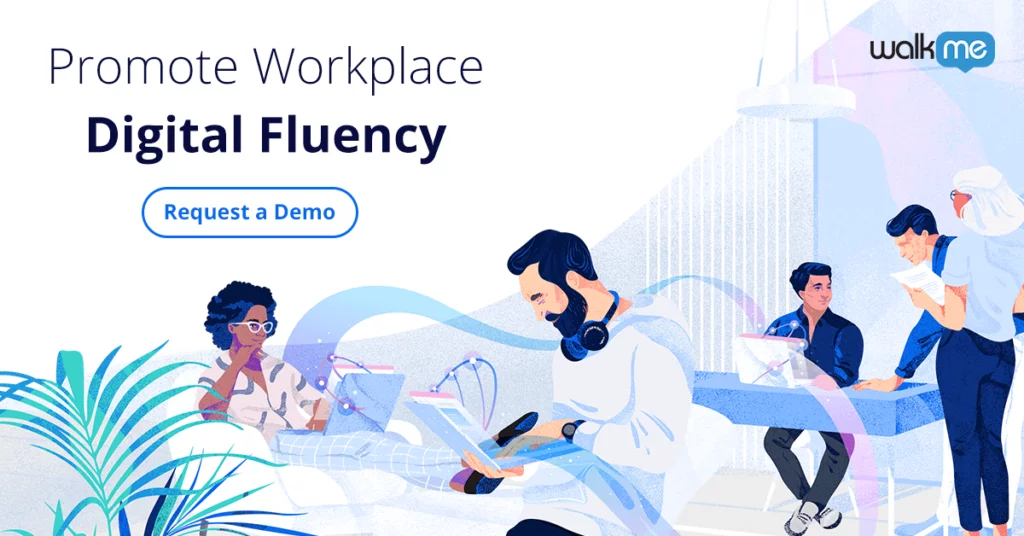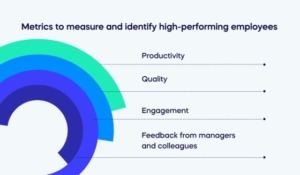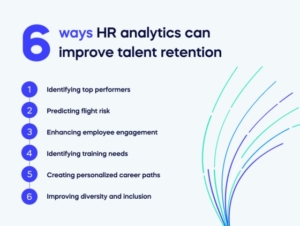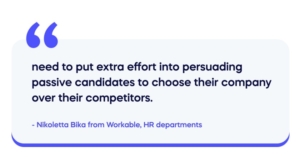Are you finding it difficult to attract and retain top talent for your organization?
How often have you struggled to find qualified candidates in an ocean of subpar resumes? The good news is you’re not alone and are tried and tested solutions to make the recruitment process more efficient and effective.
In an oversaturated job market, finding the best employees and keeping them engaged can be challenging. But what if we told you that there is a solution that could help? Enter HR analytics.
Human resource (HR) analytics is the process of gathering data related to a company’s human resource processes and using it to inform decisions about how they are managed. This data includes recruitment, employee performance, engagement, and retention metrics and can go a long way in nurturing HR digital transformation.
This article will explore how HR analytics can help organizations find and keep top talent. We will discuss the importance of collecting and analyzing HR data, what metrics to measure to identify high-performing employees, and how to use these insights to create effective talent management strategies. We’ll finish by providing tips on implementing HR analytics in your organization and the tools needed to get started.
By the end of this article, you will better understand how HR analytics can transform your talent management practices and enable you to attract and retain the best employee experience in your industry.
What is HR analytics?
HR analytics refers to systematically applying data and statistical methods to extract insights and intelligence related to various HR processes. This includes areas such as recruitment, employee retention, engagement, productivity, and performance management.
The practice involves gathering and analyzing data from multiple sources, including employee surveys, HR systems, performance metrics, and other relevant data points. The objective is to identify patterns and trends that enable organizations to make better-informed decisions in workforce optimization, development, and strategic planning, leading to improved business outcomes.
Why is HR analytics important for talent retention?
HR analytics holds immense significance in modern-day organizations as it provides a way to gain valuable insights into how their workforce operates. By leveraging HR analytics, businesses can obtain data-driven insights into employee engagement, retention, and performance, which can inform HR strategies and drive organizational development.
It enables HR professionals to make informed decisions based on hard evidence rather than intuition, leading to improved business outcomes. HR analytics also plays a crucial role in identifying talent gaps, improving employee productivity, and fostering a positive work culture, ultimately contributing to the company’s overall success.
Analyzing data on employee engagement, turnover rates, and other factors provides organizations with valuable insights into what motivates their employees and what they need to stay with the company long-term. With this information, HR teams can develop targeted strategies to improve retention rates, such as offering competitive compensation packages, providing career growth and development opportunities, and creating a supportive workplace culture that values diversity, equity, and inclusion.
How can HR analytics data help find and keep top talent?
Human Resources (HR) analytics data can be a powerful tool to help organizations find and retain top talent. By leveraging data such as employee engagement levels, turnover rates, and performance metrics. HR teams can gain insights into their workforce which can be used to identify trends, strengths, and areas for improvement.
One of the primary ways that HR analytics data can support talent management is by providing visibility into factors that impact employee retention. HR teams can make informed decisions about changes to company policies or benefits that could help reduce attrition by analyzing data related to reasons for turnover, such as job satisfaction and compensation.
HR teams can use performance metrics and demographic data to spot any potential inequalities in hiring practices or training opportunities that may hinder certain groups’ success in the organization.
HR analytics can also identify high-performing employees and track their career development. By measuring progress against key performance indicators and goals, HR teams can offer targeted development opportunities and recognition to keep these employees engaged and motivated.
Metrics to measure and identify high-performing employees
Identifying high-performing employees is a crucial aspect of talent management. However, determining the metrics to measure can be challenging. Some of the key metrics that can help identify high-performing employees include productivity, quality, and engagement:
- Productivity (output, sales generated, projects completed)
- Quality (customer satisfaction ratings, error rates, compliance)
- Engagement (participation in training programs, retention rates, employee survey responses)
- Feedback from managers and colleagues (communication skills, problem-solving abilities, team collaboration).
Productivity is a measure of how effectively an employee is utilizing their time to complete tasks. Metrics such as output, sales generated, or projects completed can provide insight into an employee’s productivity levels.
Quality is another essential metric that can help identify high-performing employees. Quality measures may include customer satisfaction ratings, error rates, or compliance with established policies and procedures.
Engaged employees are likelier to be high performers, so metrics related to engagement levels, such as participation in training programs, retention rates, or employee survey responses, can also be useful.
HR teams should collect feedback from managers and colleagues to identify high-performing employees. Besides quantitative metrics, qualitative data such as communication skills, problem-solving capabilities, and team collaboration can give valuable insights. Regular performance reviews or 360-degree evaluations can be used for gathering feedback.
Such evaluations enable employees to get feedback from co-workers, subordinates, and managers.
HR teams can use the insights gained from measuring metrics of high-performing employees to create impactful talent management strategies. By identifying the strengths and skills of these employees, HR teams can design targeted development plans that harness their abilities.
One way to encourage a culture of achievement among employees is to acknowledge and reward those who perform well. HR teams can use data on job performance and market rates to ensure that their compensation packages are fair and reflect an individual’s level of productivity and engagement.
6 ways HR analytics can improve talent retention
To retain top talent, HR uses people analytics to identify factors contributing to employee engagement and satisfaction. People analytics involves analyzing employee data to gain insights into workforce behavior, trends, and preferences. This helps HR create a more supportive workplace culture and improve retention.
Let’s explore six ways people analytics can help boost organizational performance:
- Identifying top performers: People analytics can help HR identify employees who consistently perform at a high level. By recognizing these top performers, HR can implement initiatives to engage with them more effectively and retain them for longer.
- Predicting flight risk: By analyzing employee data such as social media activity, performance metrics, job history, and interactions with colleagues, people analytics can predict which employees are more likely to leave their job. HR can use this information to intervene and prevent the loss of valuable talent.
- Enhancing employee engagement: People analytics can help HR understand the factors that drive employee engagement and job satisfaction. With this knowledge, HR can create targeted initiatives to improve engagement and retention.
- Identifying training needs: By analyzing employee performance data, people analytics can identify skill gaps and training needs across the organization. Addressing these gaps can help increase employee satisfaction and retention.
- Creating personalized career paths: People analytics can help HR understand employees’ skills, interests, and career goals. With this information, HR can create personalized career paths that align with employees’ aspirations. This helps motivate employees to stay with the company and develop their skills.
- Improving diversity and inclusion: People analytics can help HR identify any biases in hiring and promotion practices. By addressing these biases, HR can create a more diverse and inclusive workplace. This improves employee satisfaction and retention, as employees feel valued and respected.
Recruit the super talent in your industry
Finding and hiring the right candidate is getting harder. Managers and team leaders depend on you to sign high-quality candidates with the right skill set in a highly competitive job market.
According to Nikoletta Bika from Workable, HR departments “need to put extra effort into persuading passive candidates to choose their company over their competitors.”
Challenges include attracting the right candidates, fair and unbiased selection, accessing the necessary data to measure their projected success, and hiring people quickly and efficiently.
Many new tools have been developed to aid with recruitment alone.
For example, systems that analyze skill gaps in each department can also help you identify candidates with the right experience and skill set to find the best hire fit.
An essential tool for any HR deck is an Applicant Tracking System (ATS).
Half of employers across all sized companies have an ATS, which is increasing rapidly. ATS platforms like Lever, BambooHR, and Greenhouse allow HR teams to efficiently manage and analyze candidates.
And according to Career Builder, 78% of employers that use ATS systems report that software improves recruitment.
Using AI for recruiting — the opportunities and limitations
Tools powered by artificial intelligence can be a major asset to your HR analytics strategy.
AI could enhance your company with inclusivity and diversity by allowing you to avoid hiring biases. A diverse workforce includes a wider variety of perspectives and voices.
But research continues to show that “even when employers strive to be inclusive, they may subconsciously lean toward candidates who are most like them, or what they call ‘unconscious bias.’”
Imagine if vetting candidates was objective and not influenced by societal and personal biases often affecting our perceptions of others.
However, this new AI technology is still being developed. It’s still programmed by humans who have unconscious biases themselves. Another question we are facing is how to prevent these systems from perpetuating the bias issue instead of solving it.
HR analytics that uses AI need to be carefully reviewed to acquire the best talent and enhance diversity in your company.
Use your internal data to give your employee experience a boost
Your employees’ experience directly influences the quality of their performance and the likelihood of staying at your organization.
In top companies’ “work hard, play hard” culture today. It is up to HR to make sure employees feel valued and are engaged at work. HR analytics can be instrumental in helping you gauge how productive and happy employees are.
Keep your finger on the pulse
With a data-driven employee experience model, you can take a proactive and personalized approach to foster engagement, improve performance, and boost productivity.
One aspect of the employee experience that demands greater focus is feedback. Today, the annual performance review is not enough. Instead, HR analytics systems that enable automated assessments are the key to providing real-time, personalized feedback to drive continual performance improvement. Ad hoc employee surveys can also help you uncover organizational blind spots and identify issues across the employee lifecycle.
Longitudinal tracking can help you monitor and improve the employee experience over the long term. It shows you where there are opportunities to provide additional learning and development, which enhances employee motivation and commitment to the organization.
Platforms that keep a pulse on employee engagement allow you to remedy potential issues with the employee experience before the situation becomes more serious. You can set notifications Based on predefined criteria to help your team accurately assess when employees need extra support.
Insights derived from HR analytics are particularly useful when shared across departments. This allows leaders to benefit from one another’s employee engagement strategies and learn from other teams’ failures and successes.
Propel your employee retention rate
Keeping high-value employees is one of the main challenges for HR, and turnover can be a serious drain on finances. Losing an employee, on average, costs 33% of their annual salary.
With platforms like LinkedIn and Glassdoor accessible at the click of a mouse, it’s become easier than ever for people to find other opportunities if things feel less than satisfactory at work.
You can prevent voluntary turnover by analyzing employee tenure and resignation data.
Don’t let anyone slip through the cracks
People analytics can be derived from exit interviews to understand the factors that led to an employee’s resignation. It can help you identify trends contributing to turnovers, such as a particular time of year, compensation, feedback, or other incentives.
Understanding these factors can help you identify proactive solutions to prevent them and reduce churn. For example, maybe your managers should change their approach to delivering feedback, or the company should plan fun events more strategically to increase motivation.
Your Human Resource Information System (HRIS) can help you identify employees who haven’t received a raise for a certain time or haven’t been offered any new opportunities or promotions for too long.
There is no better incentive to stay at your company than reassuring a valued employee that there’s room to grow. Use internal and external career path data to ensure your promotion systems are fair and realistic.
Platforms like Workforce, SuccessFactors, and Engagedly can keep track of these factors and alert your team when it’s time to connect with a specific employee and ensure they feel valued.
Make the most of your HR deck
The good news about HR analytics is that, most likely, you’re already sitting on a goldmine of data.
According to Sierra-Cedar, large organizations have up to 75 different HR and business systems.
Now the questions you should be asking are, how do we fully utilize our platforms? And what insights can we glean from the plethora of information in front of us?
With a creative and strategic approach, you can harness vast amounts of people analytics and utilize them to elevate your company’s talent and employee experience to the next level.
Maximizing your talent acquisition and retention strategies with HR analytics
In conclusion, HR analytics can be a game changer for organizations looking to attract and retain top talent. Workforce data gives companies valuable insights into what drives employee engagement, job satisfaction, and performance.
This information can then be used to fine-tune recruitment strategies, optimize compensation packages, and implement targeted development programs that help employees reach their full potential. HR analytics is critical in identifying flight risks and enabling proactive interventions to keep high-performing employees from leaving.
As the competition for skilled labor intensifies, businesses that fail to embrace HR analytics risk falling behind their rivals in talent acquisition and retention. With the right tools and guidance, companies can use data-driven approaches to build stronger, more engaged workforces that drive growth and innovation.





